I have data for miles being traveled from 1970-2019 with every entry being a new month.
There is no missing data in this dataset.
Here is a snippet of the data in CSV format:
DATE,TRFVOLUSM227NFWA
1970-01-01,80173
1970-02-01,77442
1970-03-01,90223
1970-04-01,89956
1970-05-01,97972
1970-06-01,100035
1970-07-01,106392
1970-08-01,106969
1970-09-01,95254
1970-10-01,96317
1970-11-01,89684
1970-12-01,89911
1971-01-01,85336
1971-02-01,80118
1971-03-01,92974
1971-04-01,98106
1971-05-01,103655
1971-06-01,105433
1971-07-01,112466
1971-08-01,112642
1971-09-01,101290
1971-10-01,102525
1971-11-01,95555
1971-12-01,95515
Now I'm trying to create a monthplot with the ggplot library:
library(dplyr) # data management
library(tidyr) # data management
library(ggplot2) # visualization
library(gridExtra) # combine multiple plots
library(stats) # basic statistical tools
library(forecast) # main time series analysis package
library(lubridate) # data formatting
library(tseries) # addition to forecast
library(zoo) # z-ordered observations (irregular timeseries)
data = read.csv("Travelling_Statistics.csv")
timeseries = ts(data,start=c(1970,1),frequency=12) # time series in monthly frequency from January 1970
ggmonthplot(timeseries)
I get the following error:
Error in data.frame(y = as.numeric(x), year = trunc(time(x)), season = as.numeric(phase)) : arguments imply differing number of rows: 1176, 588
What could be the cause for this error message and how can it be fixed?
Everything I found online doesn't seem to be related to the problem that I have.
Thanks in advance!
